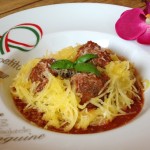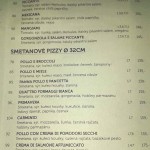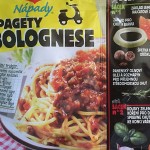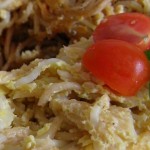From Špagetová pizza to Babovka cappuccino, among local variations and authentic blunders
Italian cuisine is undoubtedly one of the best known and appreciated in the Czech Republic, it may be easily found in restaurants all over the country and that offers some of the most famous dishes of our gastronomy: not only pizza and spaghetti, but also a few of the most varied regional specialties. However, besides the authentic restaurants, there are also many of them – run by non-Italians – who simply “draw inspiration” from Italian cuisine, often achieving rather questionable, and at times, even tragicomic results. The love for Italian cuisine by the Czechs is not a recent phenomenon, but it has grown considerably over the last ten years, both for the increased amount of food products entering into the country from Italy, that was unobtainable a few years ago, and the greater number of new companies entering the sector dedicated to Italian food in general. But despite this fact, in the Czech Republic – as in other countries around the world – there are a few fake myths regarding our local cuisine that are hard to die out, (a typical example is the American case of “pepperoni pizza” and “spaghetti meatballs”). It is, thus, easy to understand how all this becomes rather confusing to the average Czech, but also to many “professionals”, and this is apparent when you go to a restaurant and start looking for an “Italian” dish in the menu. You soon realize that, apart from the name, there is little in common with Italian food and that the Italian writing is often so full of mistakes. It is impossible not to mention a few emblematic cases such as “Pene al Salmone”, “gorgonzolla Gnocci”, “Pezzi di polo al sugo” or “Pizza al prosciutto di oliva”.
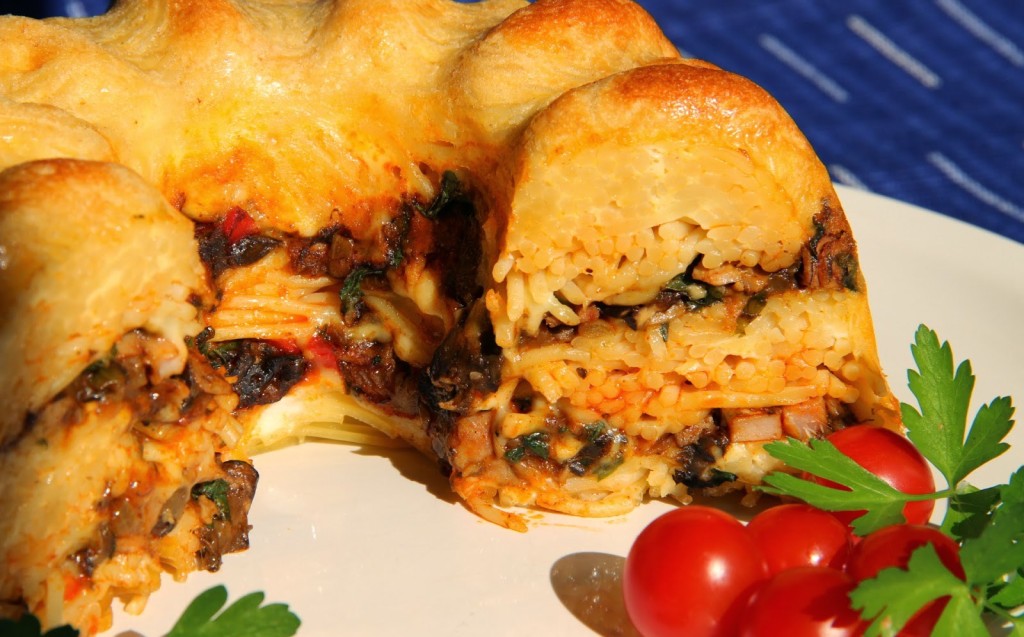 Many Czech pizza chefs are strongly convinced that the most popular pizza in Italy is pizza with chicken. For those who wish to taste this “Italic” specialty on Bohemian soil, we recommend some of the following variants we found in various menus – along with many errors and horrors involving Italian cuisine – which was posted on a very amusing Facebook page entitled “Marco Pollo: Trash Italian Food in Prague”. “Chicken and broccoli pizza”; “Chicken and honey”; “Chicken, cream and bacon”; “Chicken and sour cream”… But, as well as the addition of chicken to “Italian-Czech” pizza, you will actually find almost anything being added, as shown on the above mentioned Facebook page. “Pizza with edam and ham” up to the ones with “cheese and blueberries, cream and mozzarella” and “Pizza Parma”, and as a topping, an imitation of the famous Italian cold meats and salami, the choice is really enormous. After all, “de gustibus non est disputandum”.
Many Czech pizza chefs are strongly convinced that the most popular pizza in Italy is pizza with chicken. For those who wish to taste this “Italic” specialty on Bohemian soil, we recommend some of the following variants we found in various menus – along with many errors and horrors involving Italian cuisine – which was posted on a very amusing Facebook page entitled “Marco Pollo: Trash Italian Food in Prague”. “Chicken and broccoli pizza”; “Chicken and honey”; “Chicken, cream and bacon”; “Chicken and sour cream”… But, as well as the addition of chicken to “Italian-Czech” pizza, you will actually find almost anything being added, as shown on the above mentioned Facebook page. “Pizza with edam and ham” up to the ones with “cheese and blueberries, cream and mozzarella” and “Pizza Parma”, and as a topping, an imitation of the famous Italian cold meats and salami, the choice is really enormous. After all, “de gustibus non est disputandum”.
Apart from pizza, there is also our beloved pasta, whose preparation and the particular role it plays at the table is often misinterpreted by the Czechs. The myth, according to which you have to use ketchup as a topping on pasta (and, of course, on pizza), is surprisingly quite common even today in a number of areas around the Czech Republic, but particularly on the web (there are internet sites such as: toprecepty.cz, recept-online.cz, receptynakazdyden.cz…), and the conviction that pasta is not really a main dish, but rather a side dish – just like potatoes and even better if it topped with sauce, just to add a bit of flavour to it – to go with the meat. Speaking about pasta, it seems that one of the most famous “Italian” dishes that is also appreciated in the Czech Republic – as in many other countries – is “Spaghetti Bolognese”. To an Italian the contradiction is quite evident, not so much because traditional Bolognese sauce is subject to a precise, elaborate preparation technique, but mostly because spaghetti, however hard you may try, are not exactly part of the Emilian tradition, which prefers fresh eggs pastry, rather than the typical durum wheat dried semolina pasta which, instead, is typical of the Southern Italian cuisine. But in Italian-like restaurants you will also find “spaghetti with carpaccio”, “chicken and blueberries”, and “chicken and pesto”, not to mention the most unlikely sauces that you can find ready-prepared in a number of supermarkets, that just need to be heated up in their practical and convenient food pack. On the Czech web you may also find “typical” Italian recipes, such as “Sardinian celery soup with Parmesan”, “potato gnocchi with chicken and spinach”, “Bolognese sauce” and “spaghetti with cream, rosemary and mushroom sauce” and many other unknown “specialties” that are not found in Italian gastronomic literature, including really absurd food – it is not a joke! – such as “Špagetová pizza”! (on www.recept-online.cz).
But the most widespread fake myth, even in the Czech Republic, that involves pasta is surely that of “La Carbonara”. According to the Italian cuisine Academy, the original recipe for pasta carbonara is one of the most “faked” Italian dishes around the world, therefore also in this Country. But should we actually consider it a fake or just simply misunderstanding? Let’s leave the final judgement to the scholars. The real issue is that in Prague restaurants, original pecorino cheese is substituted with other types of grated cheese (and it is thus unlikely to be Parmesan), but above all, it is added also by well-known Czech chefs, such as Zdeňek Pohlreich (see his book “Bravo, šéfe!” on page 48), an ingredient that is not found in the traditional recipe is: cooking cream!
Another cause for misunderstanding is dessert: from the “classic Italian tiramisù”, with the typical Czech “piškoti” in place of savoiardi sponge fingers, to “Babovka cappuccino”, though it is also true that in this case the cause may be due to the limited diffusion of the Italian pastry and confectionery tradition in the Czech Republic, that is not so well known, or sufficiently widespread and appreciated – to the advantage of the French one. Fortunately, “cappuccino with porcini mushrooms” is not listed in the coffee-bar menus, but found among the soups and appetizers.
Apparently, there is still a large amount of work to be done in the Czech Republic to dispel – once and for all – the number of fake myths in order to shed light on the great number of misconceptions about Italian cuisine that, though they may be quite amusing at times, are surely quite insidious and an obstacle to the spread of a real Italian food culture and the promotion of “made in Italy” food, with potentially negative consequences also from an economic point of view.
by Mauro Ruggiero





